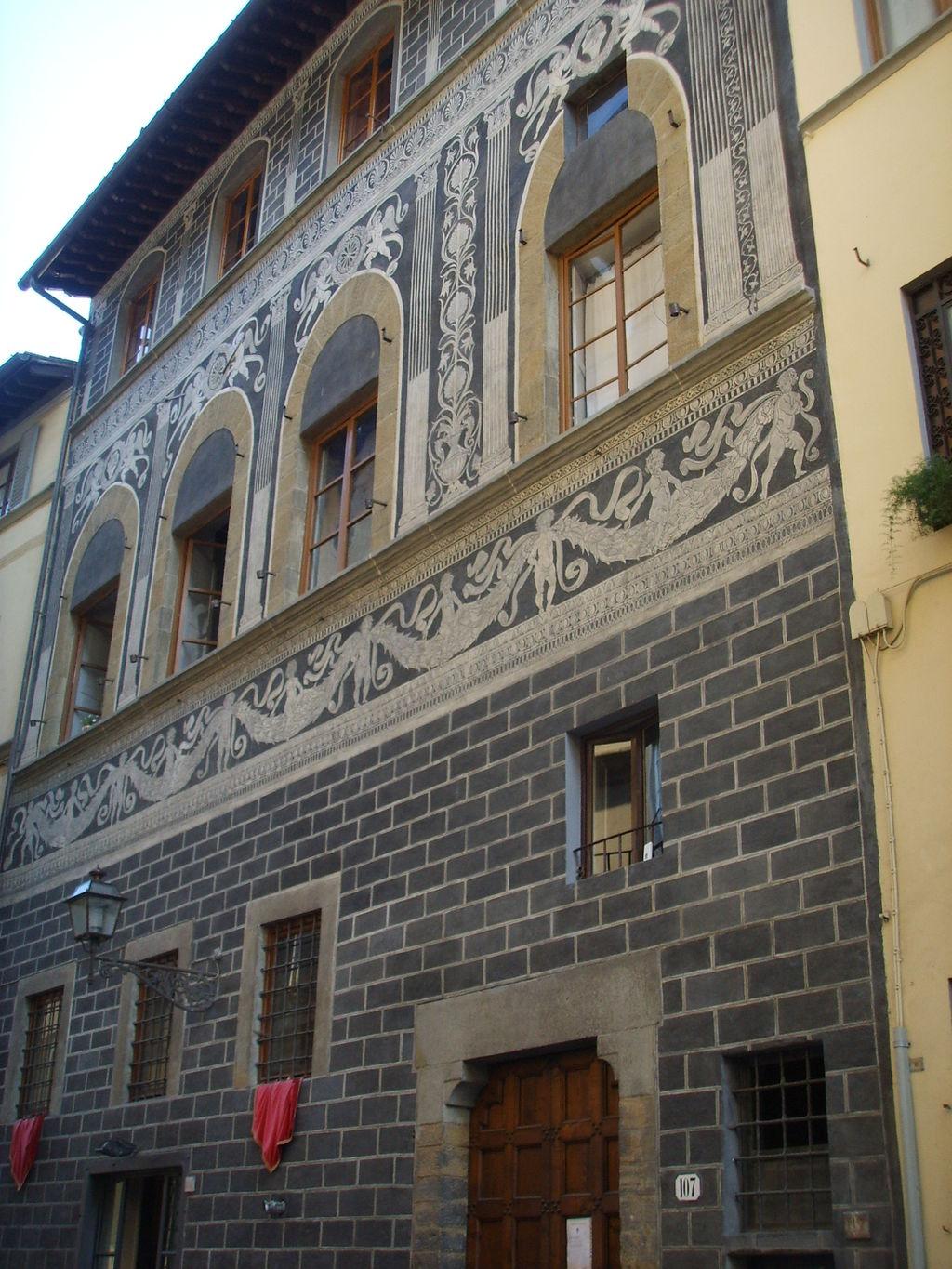
The Nasi-Quaratesi Palace in Florence, where Alessandro Dari works. Sailko
FLORENCE, Italy—Wonder is what greets you at the workshop of artist Alessandro Dari, a childlike wonder that conjures up curiosity and questions, lots of questions. Before even entering the Nasi-Quaratesi Palace, awe naturally inspires you to contort your neck to look up at the 15th-century stonework where, between fluted pilasters, pairs of putti (naked baby boys) hold wreaths over the upper windows. Under the pilasters, putti festooned with foliage are showcased on a frieze. Two red heraldic flags flank the entrance.






